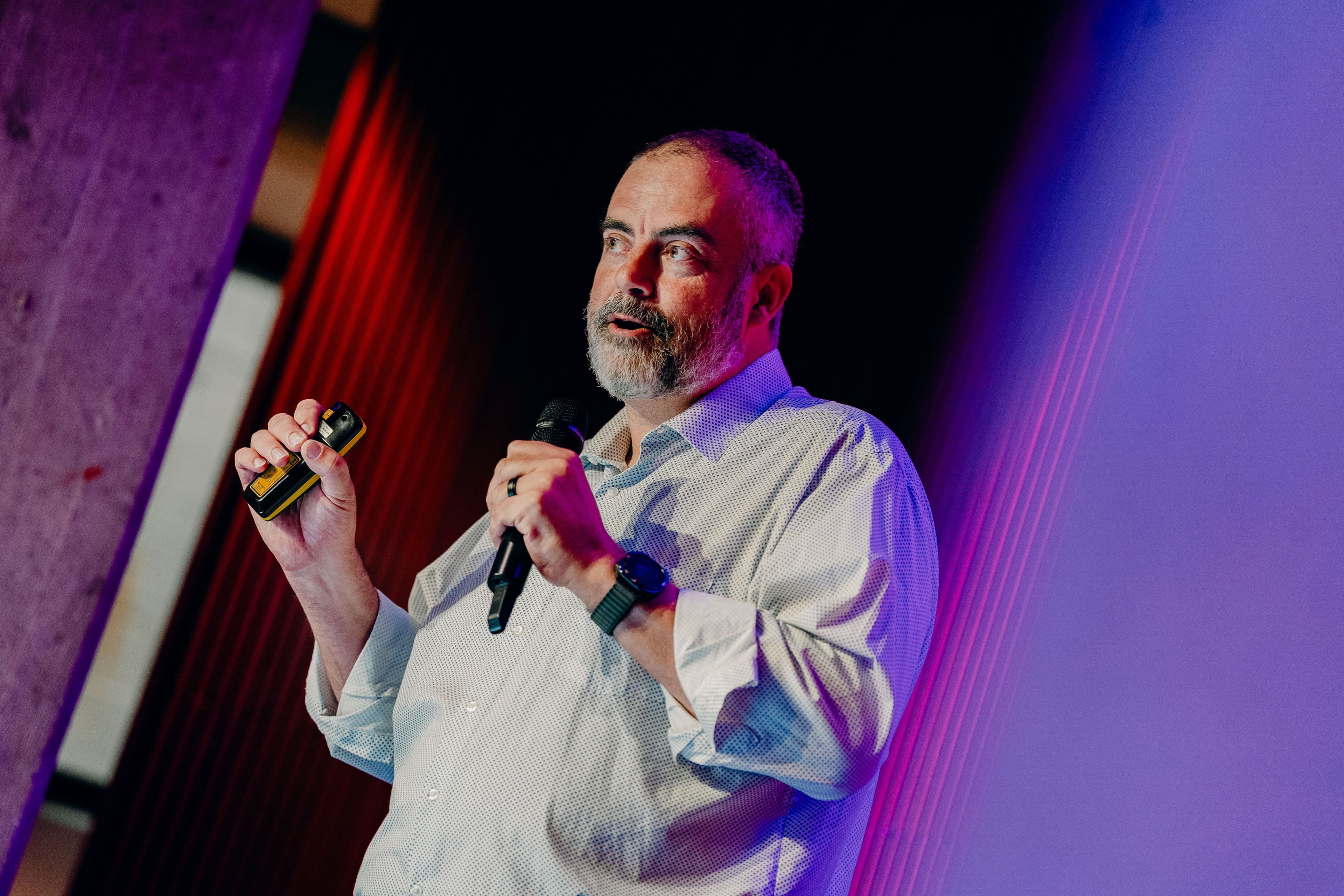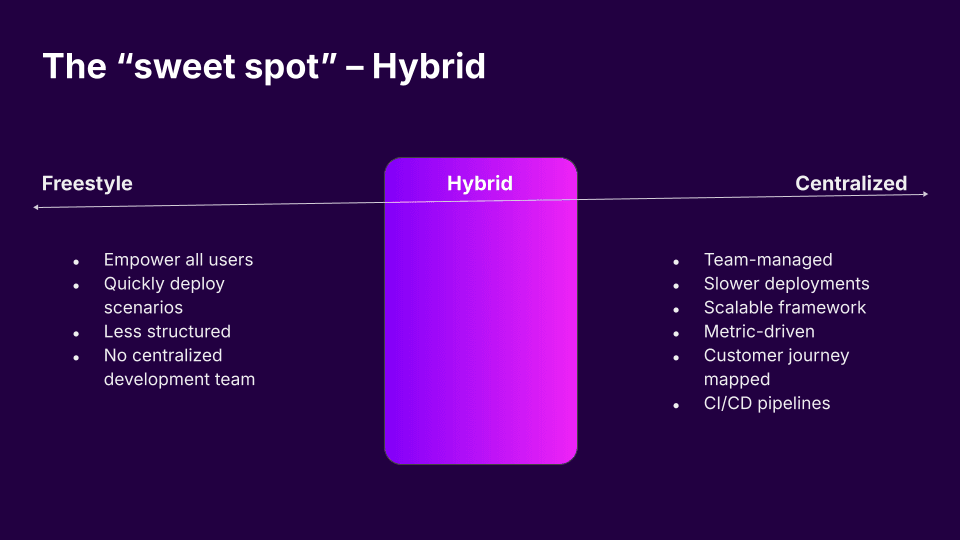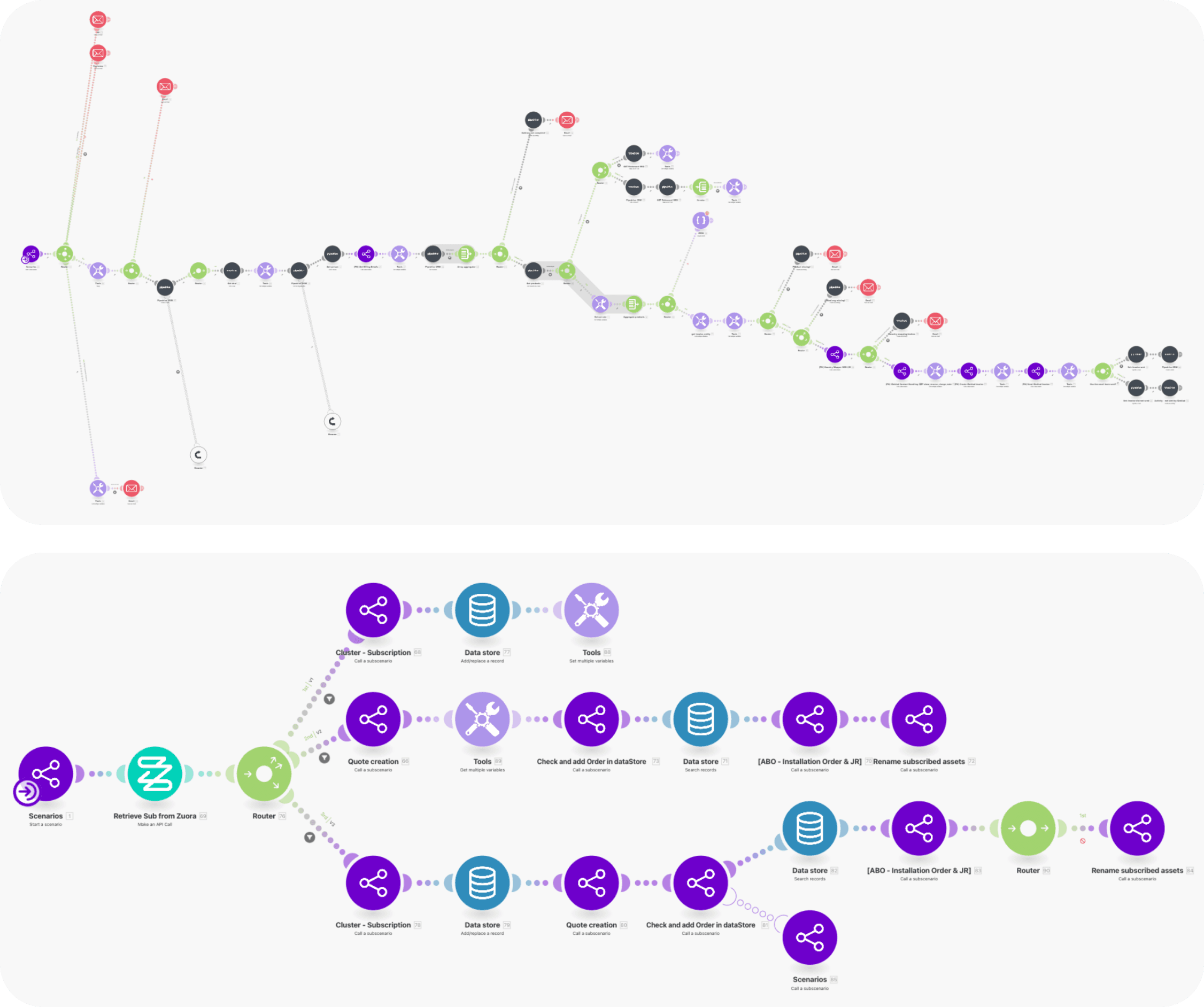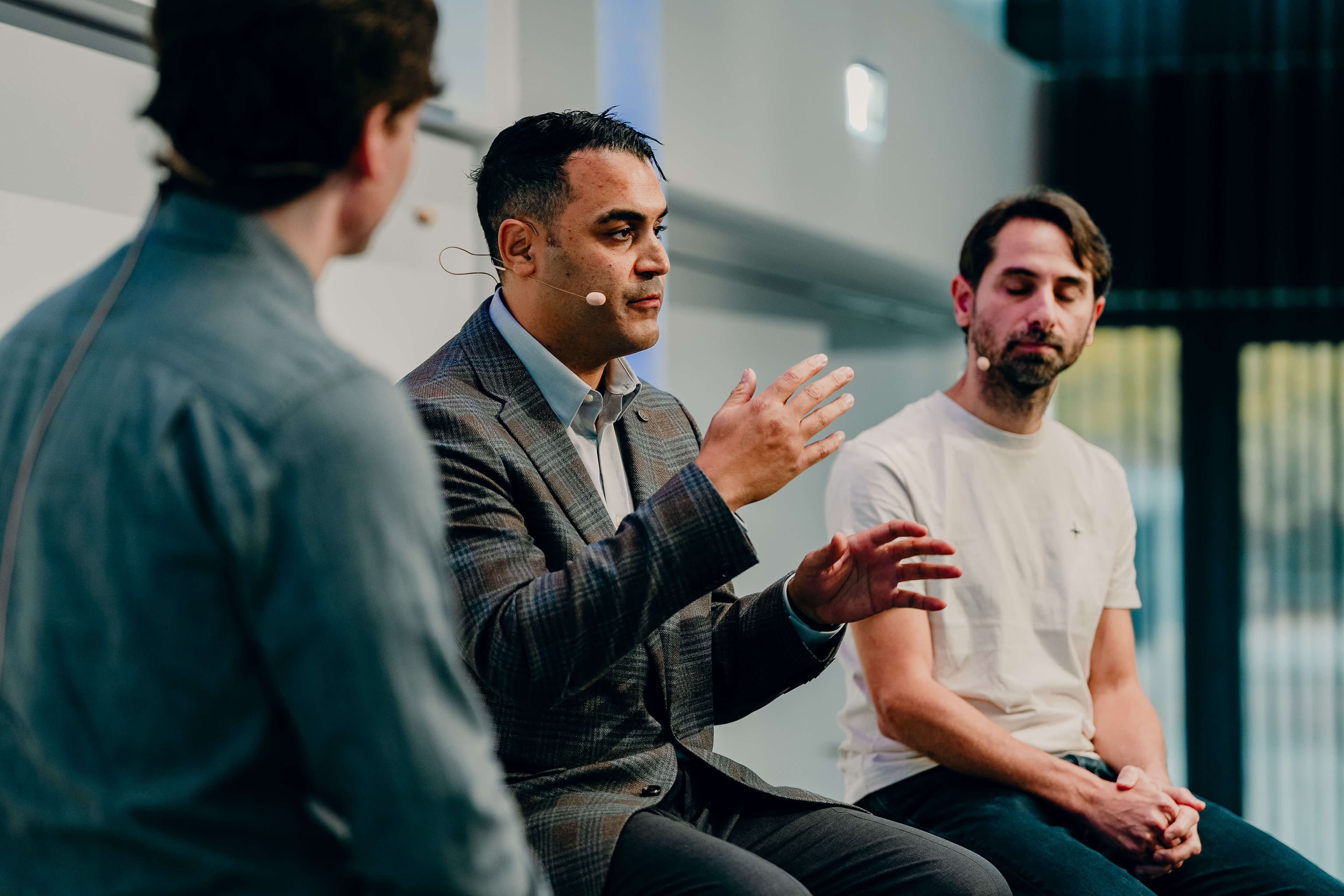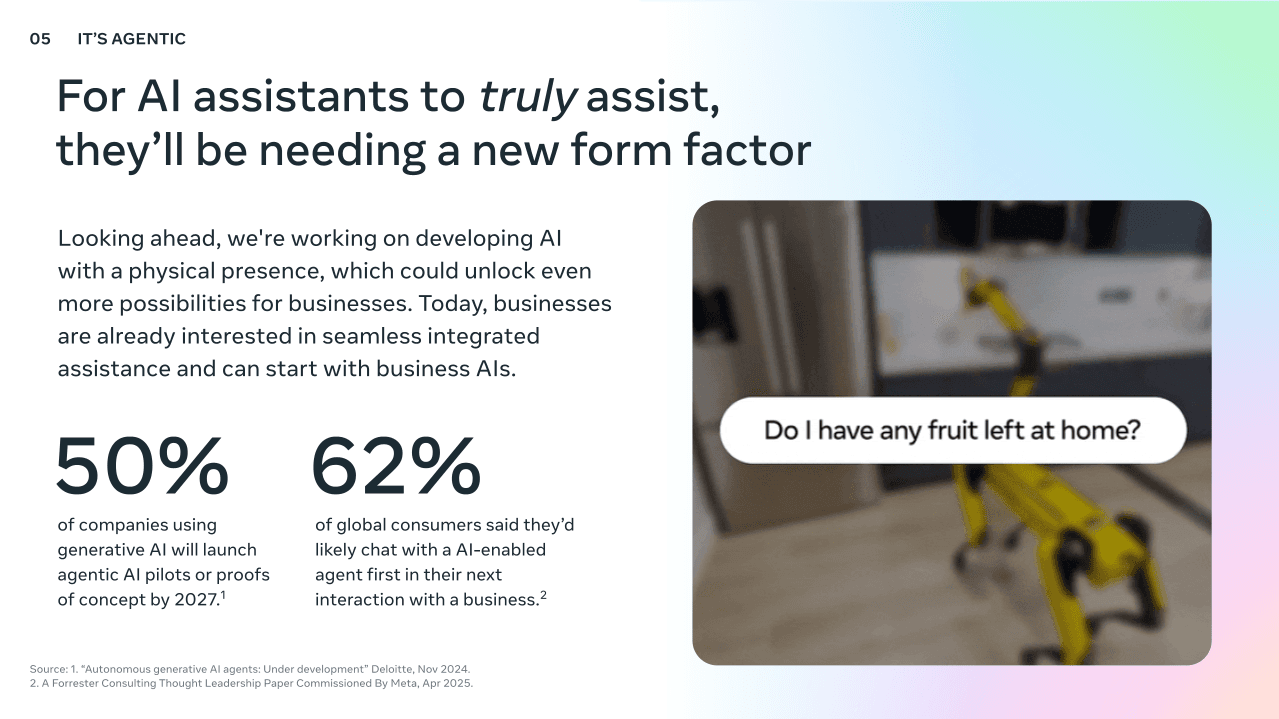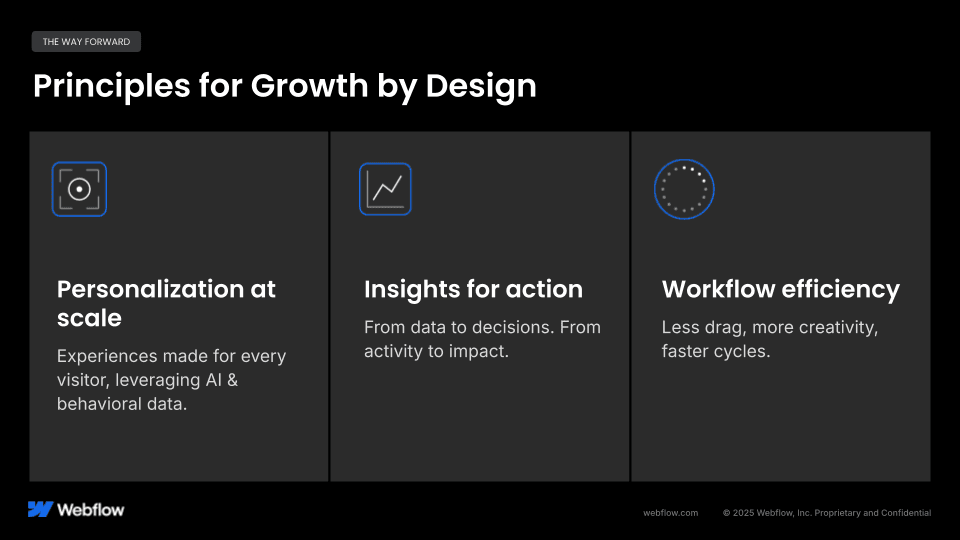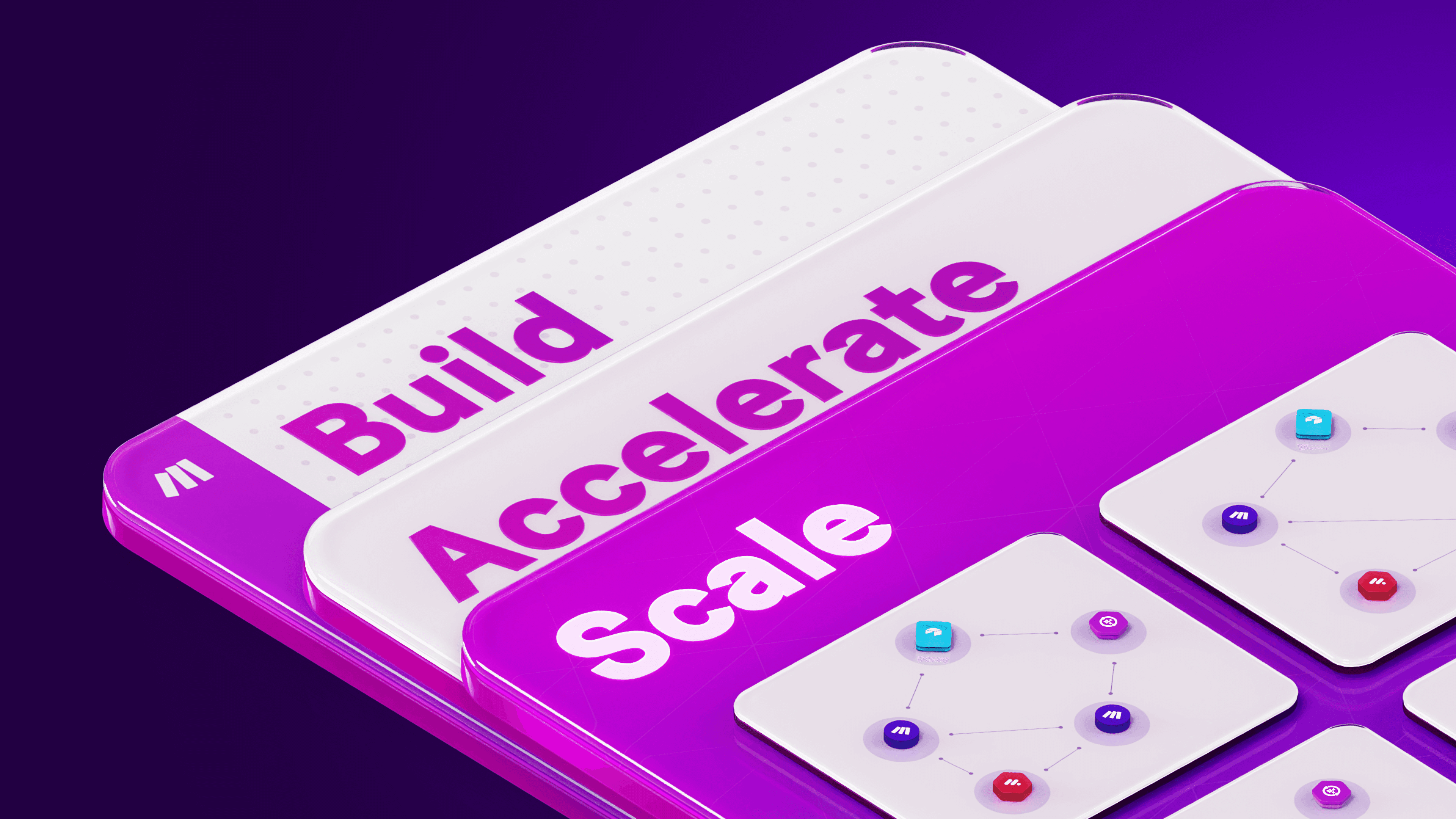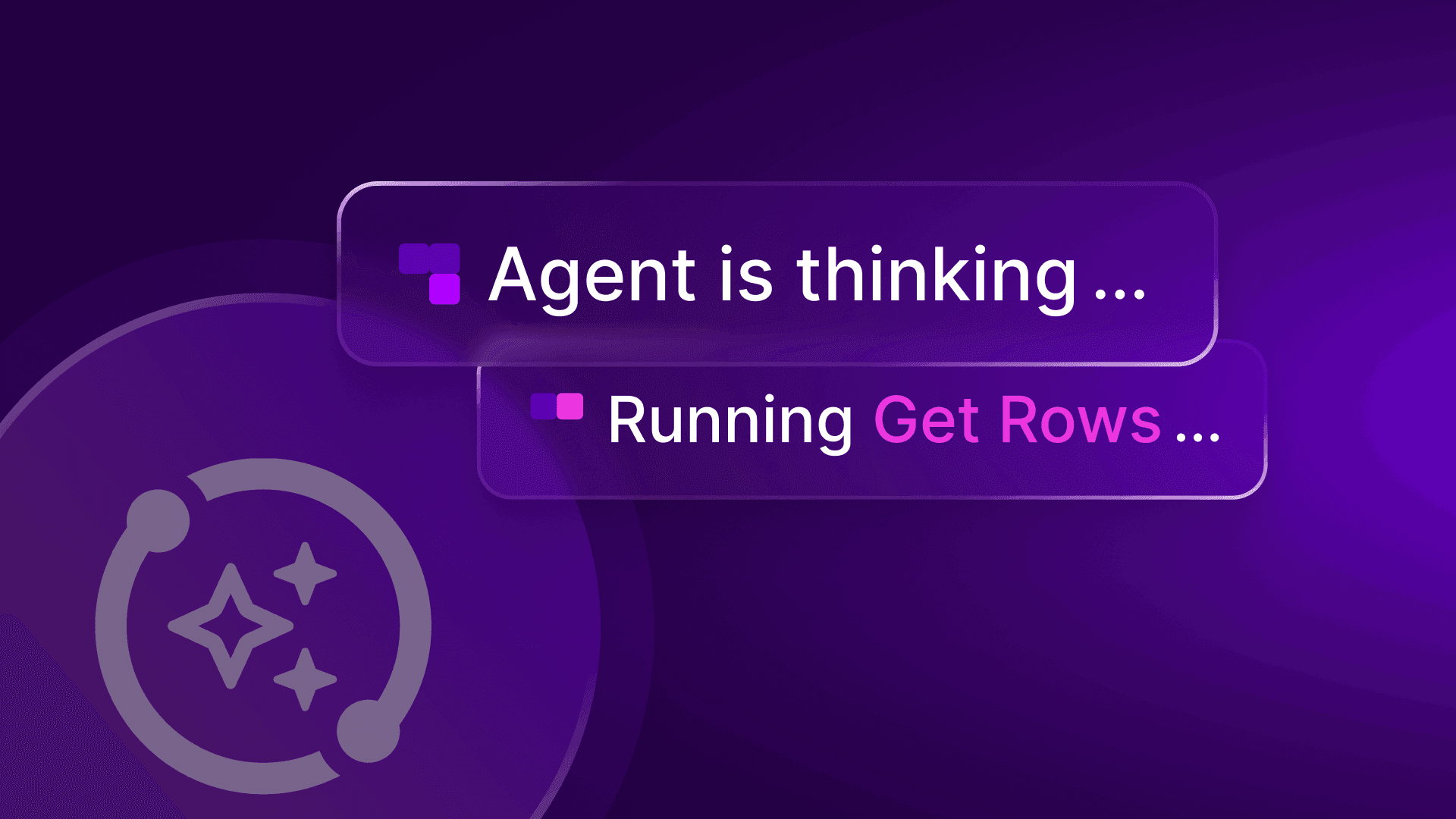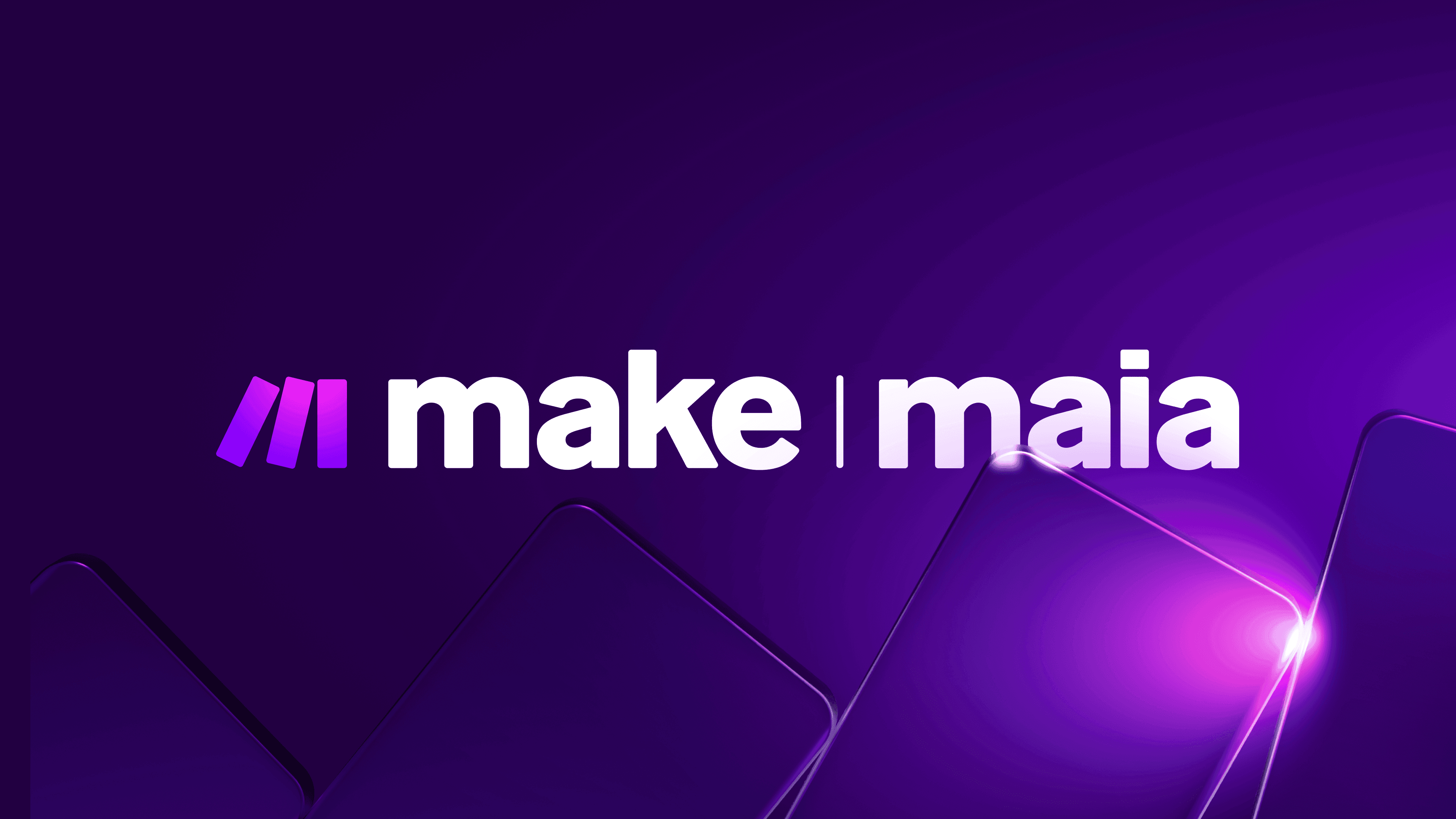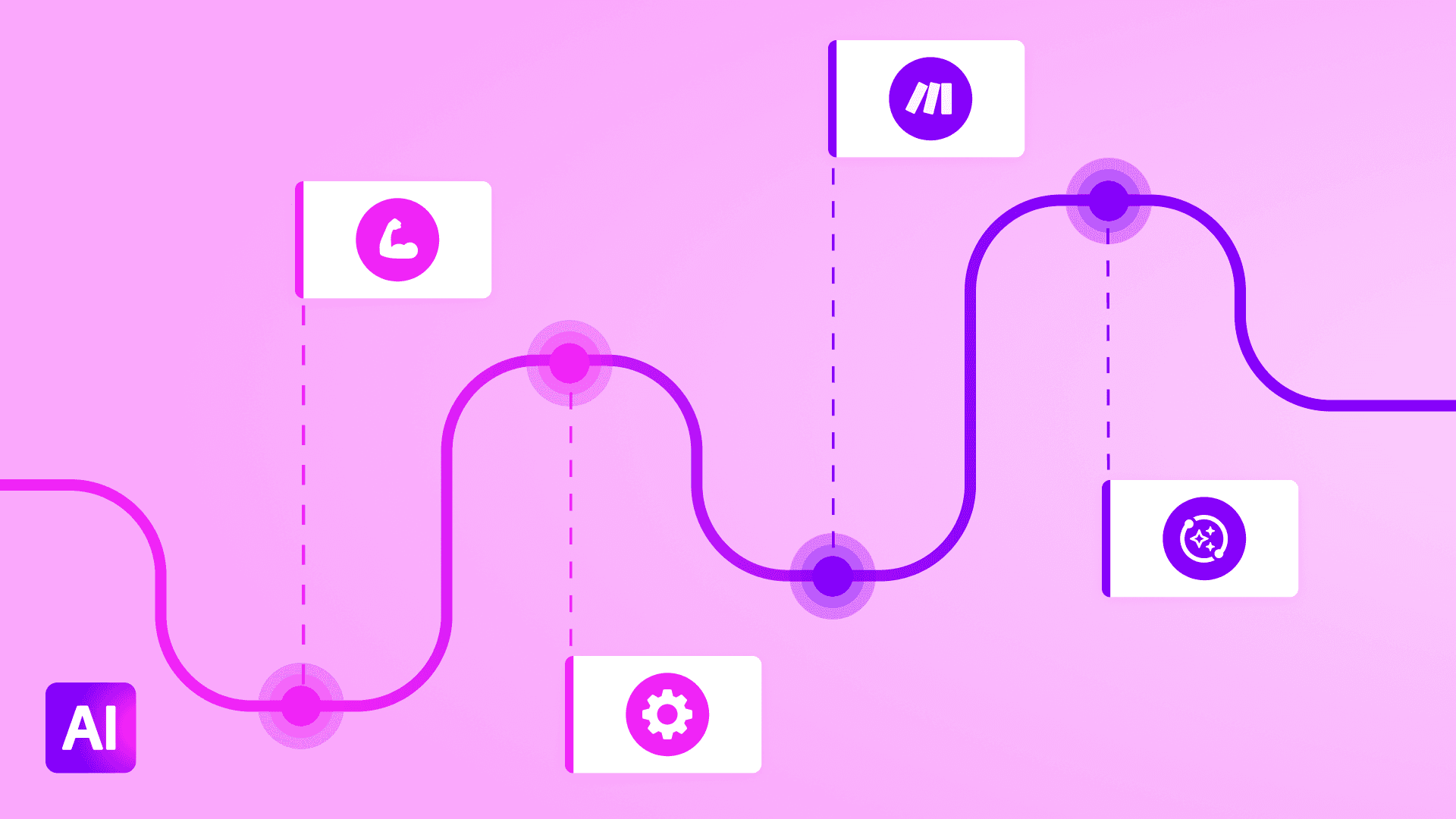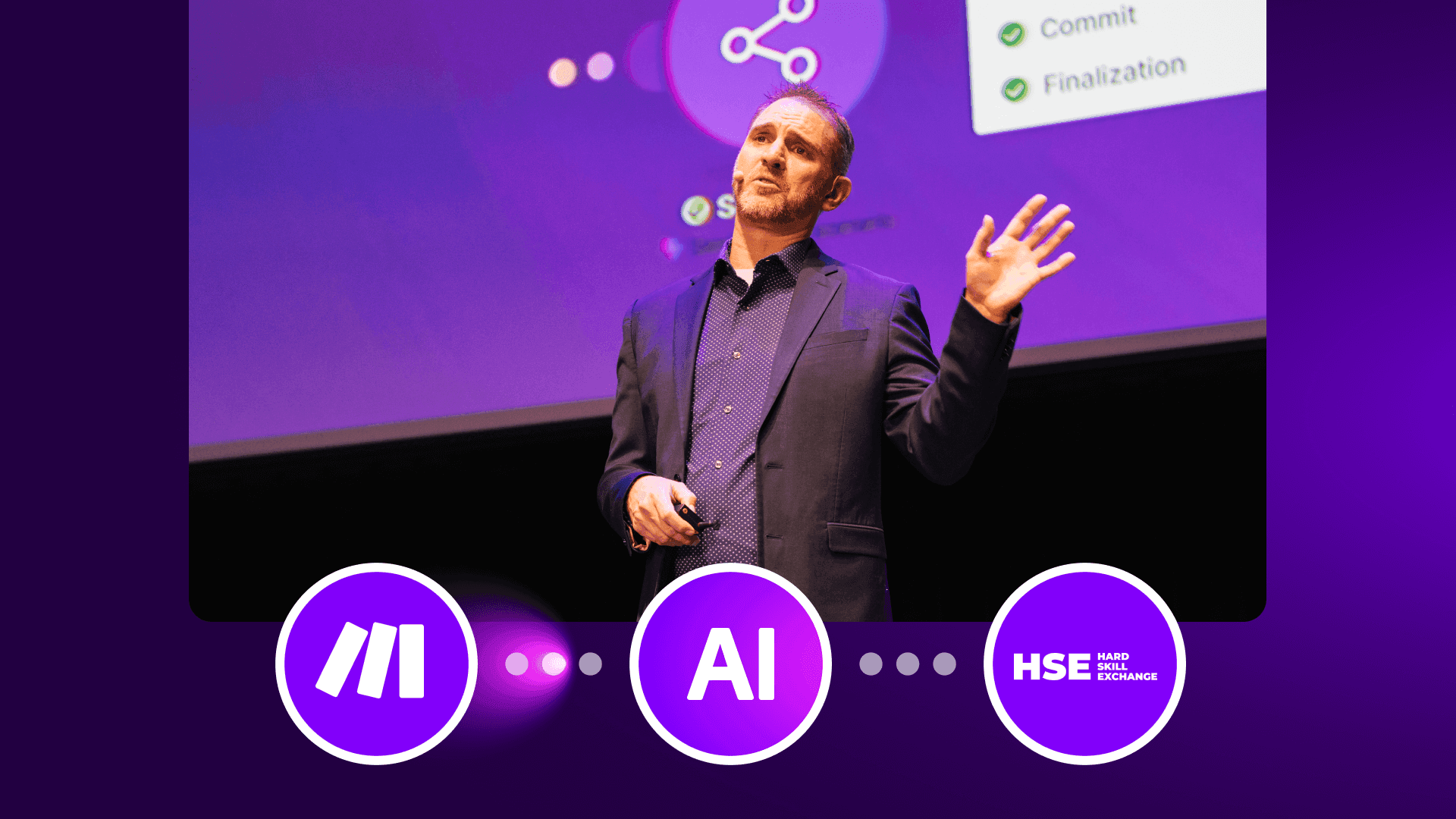Oct 24, 2025
The biggest ideas out of Waves '25
Missed Waves '25, Make's annual customer event? Attended but couldn't quite fit every session into your schedule? Here's a summary of just some of the insightful topics discussed by speakers from Make, Meta, FranklinCovey, Webflow, and more.
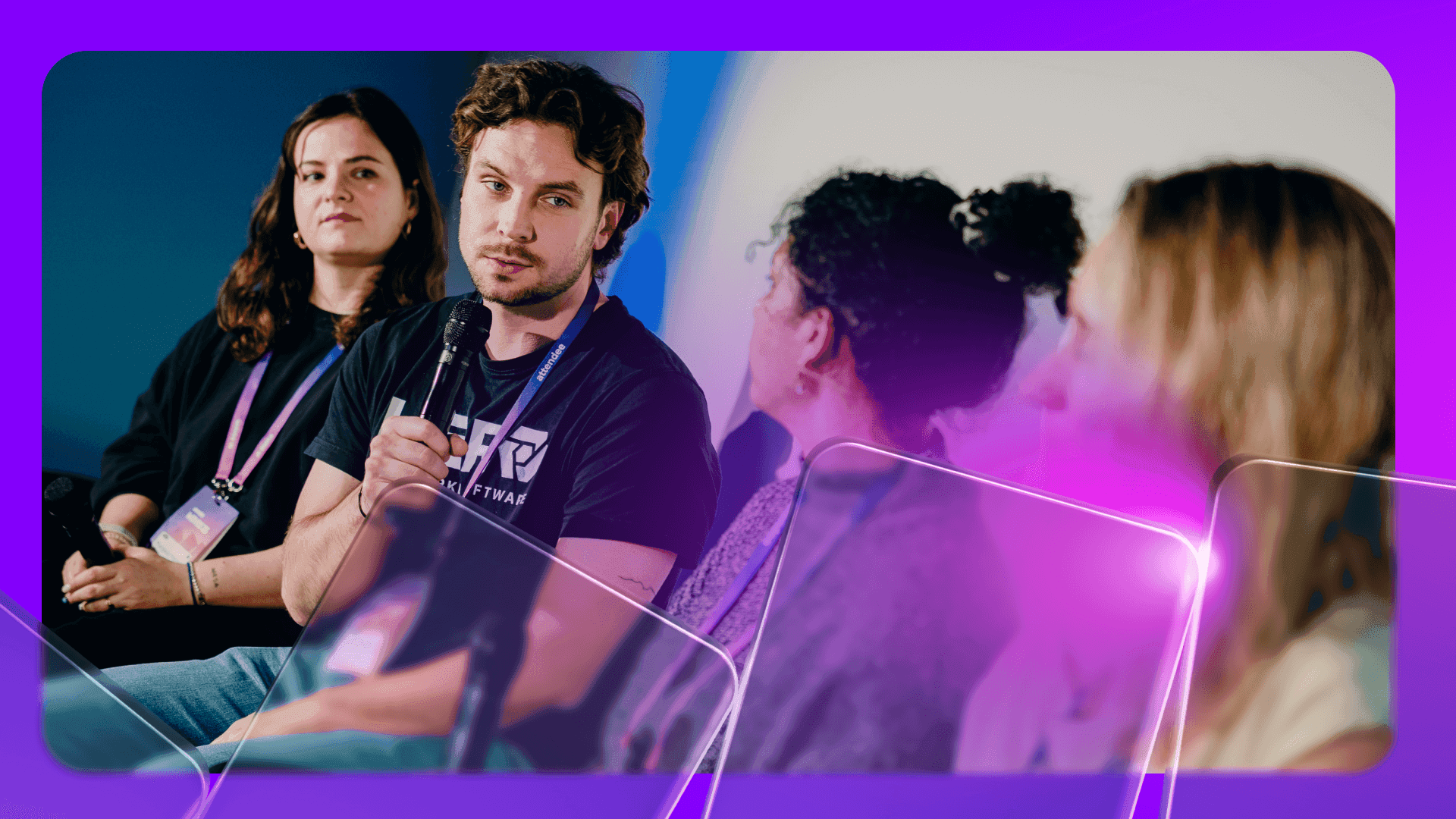
At last week's Waves '25, our annual customer event, we just wrapped up two packed days dedicated to enabling the bold to build, accelerate, scale, and make it happen in their business with automation and AI. But these were just the very biggest themes emphasized in our keynote and product announcements – expert Make employees and influential leaders from the AI industry shared many more insights throughout our agenda. From how to overcome hurdles when implementing automation and AI in your organization to why we should never forget that AI is for humans, here's a look at some of the key takeaways from our Waves '25 sessions.
Watch our full keynote address
Make leadership sets out how you can avoid the hype and get real value from automation and AI with Make.
Learning from failing
We're all turning to AI and automation for solutions to business problems, but that doesn't always happen perfectly right away. One of the most common refrains heard in our focused sessions was the importance of embracing failure as an invitation to learn and improve.
"Cheer on failures more than successes"
In their joint talk titled Driving an AI transformation, Sara Maldon, Head of Business Automation and AI at Make, and Blaine Carter, Global CIO at FranklinCovey, kicked off the day of sessions by addressing how the journey to AI-first workplaces isn't always straightforward. "I'm comfortable saying that 90% of our starting projects were failures," Sara said of her early years of getting real value out of AI tools. Blaine agreed, sharing that many of his early experiments also didn't take hold – partially because they weren't introduced to the workforce in a useful way, and partially because they may not have been the best way to solve the problem in the first place. Employees instead saw AI tools as an afternoon's novelty, one soon abandoned without fundamentally changing how or how well they were able to do their job.
I'm comfortable saying that 90% of our starting projects were failures." – Sara Maldon, Head of Business Automation and AI at Make
Instead, it took rethinking and developing long-term processes to make FranklinCovey an automation and AI leader. The first step was to go deep – identifying specific business needs that must be filled, that can be automated, and that will make a quantifiable difference in the company. Once a solution is developed, so too must be a program that guides and encourages every user to persevere through unfamiliar new ways of working, develop true understanding, and come away possessing new skills.
This second step in particular reminded Blaine of watching promising young skiers learn to conquer progressively larger jumps. Their coaches, he said, "cheer on failures more than successes," and so provide the courage and safe environment to become future Olympians. This is a good framework to keep in mind when fostering AI champions within your organization.
"Get to hybrid" when introducing AI platforms
But challenges with implementing AI don't need to be total flops to be valuable either. In one of Waves '25's most popular talks – Freestyle or framework? Paths to automation governance for maximum ROI – two longtime Make users shared their nearly opposite approaches to introducing the Make platform to their workforces. Diego Alberti, Head of Automation and AI at Daptify, for example, shared how, during his time in a similar role at a previous large company, he brought Make's automation capabilities to thousands of employees via a centralized, highly planned approach. Gabriel Stock, on the other hand, shared how TravelPerk let nearly all employees access and experiment with Make in a much more organic way.
Both panelists had good reason to adopt the strategy they did: Diego needed to prioritize access and data governance and sprawling change management, while Gabriel's organization was most focused on leveraging tailored AI and automation benefits fast. Both approaches showed results, but both had their drawbacks: the centralized "framework" approach was slow-moving and prone to bottlenecks, while the organic "freestyle" approach was inefficient in building and upkeep.
Both AI implementers agreed that a happy medium – a hybrid – between freestyle and framework is the ideal. This preserves much of the creativity of the "instant builders" who arise when individuals build their own solutions with Make, but introduces the standardization and security guarantees needed to scale automated solutions across growing businesses. The end goal, said Diego, is to "get to hybrid" – a process requiring dedication but with big, real payoffs.
Iterate, iterate, iterate
Another way of thinking about learning from imperfect projects is as a process of iteration. This too was a theme touched on in more than a few sessions.
"The fast fashion era of software"
In Unleash your inner vibe coder, Farham Ali of Vercel theorized that we're now in the "fast fashion era of software." He put this idea into action by showing how, with his company's vibe-coding software building the front end and Make's automations as the back end, you can sketch out functional apps in mere minutes. Combining vibe coding and no-code tools to assemble usable prototypes, test them hands-on, and improve the bugs is how you can fail faster and arrive at solutions much quicker.
Hedy Lemus Bird, Senior Product Designer at Make, echoed this sentiment, sharing how her UX team uses this rapid testing approach to prototype, map out micro-interactions, define edge cases, and much more on a daily basis.
"Make it work, then make it better"
In another panel session entitled Building better, faster, stronger, Make Value Engineer Daniel Zrůst recounted how he used to pride himself on building complex scenarios in Make. These were huge, intricate, and impressive, but he soon realized that they were indecipherable to colleagues who needed to maintain or adapt them. So he began exploring and then using new features like subscenarios and scenarios as functions, breaking down complicated automated workflows into components that could be reused, understood, and – when necessary – easily fixed by anyone across the company.
Fellow panelist Lior Talmor of AppsFlyer summed this up in a simple maxim: "Make it work, then make it better." New Make features make that more possible than ever.
Make AI and automation education a focus with Make Academy
But the ability to persevere through failures and to effectively iterate using new features doesn't come out of nowhere. Simply providing access to AI and automation tools isn't enough: you need to educate your organization and enable everyone within it to use those tools effectively.
FranklinCovey's experiences above already hinted at how educational resources need to be a holistic part of implementing automation and AI in a company. And while the specifics of any education program depend on those employees' individual needs and personalities, Diego and Gabriel's experiences pointed to Make Academy as a way to get a strong head start on this learning pathway. Diego, in fact, recounted the story of incorporating Make Academy into a new hire's onboarding process – after just one month on the job, that newcomer had already automated thousands of hours worth of work per month.
Stay curious, stay creative, stay human
In the end, though, Waves is as much a forward-looking event as it is one dedicated to unlocking value for businesses now. All of the speakers that appeared at our annual event spoke to the excitement of the AI future we're all building together, but two sessions in particular made this their focus.
"AI is for people"
Timo Thomsen, Head of Measurement and Signals, Partnerships EMEA at Meta, shared society-wide trends that Meta is observing. In particular, he reminded us that AI is for people – it's not just about efficiency. It helps users find purpose, connect with creators, and even open up entirely new ways for individuals and brands to interact with the world around us. Looking to the future, he speculated about the coming evolution not just from AI workflows to agentic automation, but also from AI agents to hands-free AI experiences that involve all of our senses.
Adrian Rosenkranz, CRO at Webflow, closed out our afternoon of sessions with similar sentiments. After noting how the traditional rules of SEO, web traffic, and customer conversions online have changed almost overnight thanks to generative AI, he offered a two-pronged solution. The first part is what you might expect from an AI and automation conference: use powerful automation tools like Make to react to changing consumer behaviors, optimize the technical and content aspects of your online presence, and iterate repeatedly to cater to the AI algorithms dictating who comes out on top on the internet.
Creativity will be every brand's edge – those making beautiful experiences will have the advantage." – Adrian Rosenkranz, CRO at Webflow
The second half of his solution, however, might surprise some: generate growth by design. Going forward, brands with an aesthetic and emotional hook that goes beyond LLMs will speak most effectively to the humans that ultimately want to know, use, and love your product. AI will help make design goals easier to achieve and iterate on, but human ideas and desires must remain central.
These final appeals should remind us of what Waves '25 – and Make – is all about. Make provides a powerful platform with a range of automation and AI capabilities that enable you to build, accelerate, and scale to make real business results happen. But Make does it in a unique signature style that speaks to all those things that make us human: creativity, exploration, constant learning, and more than a little bit of play. Try Make today and be sure to visit next year's Waves event for more insights.

